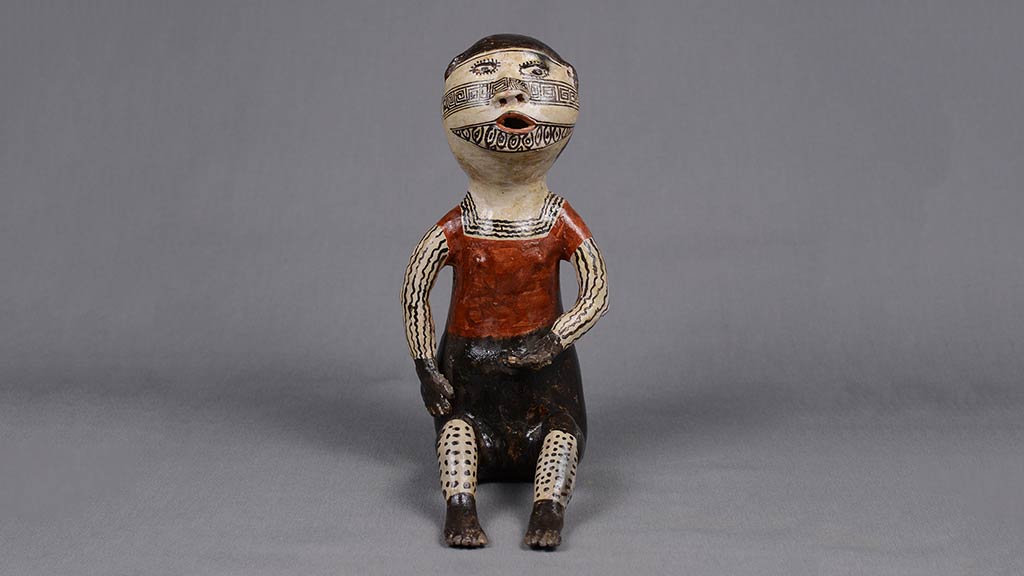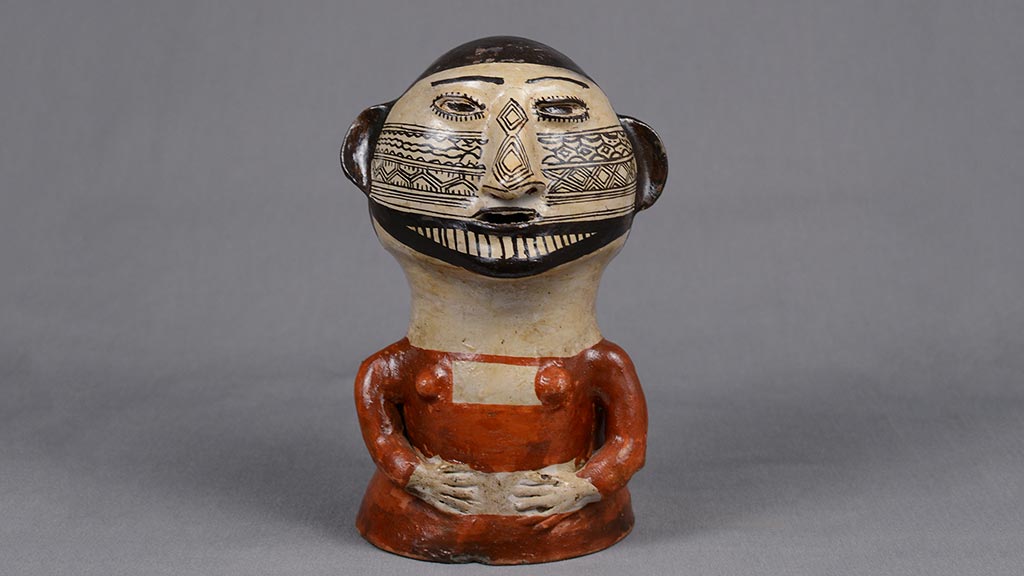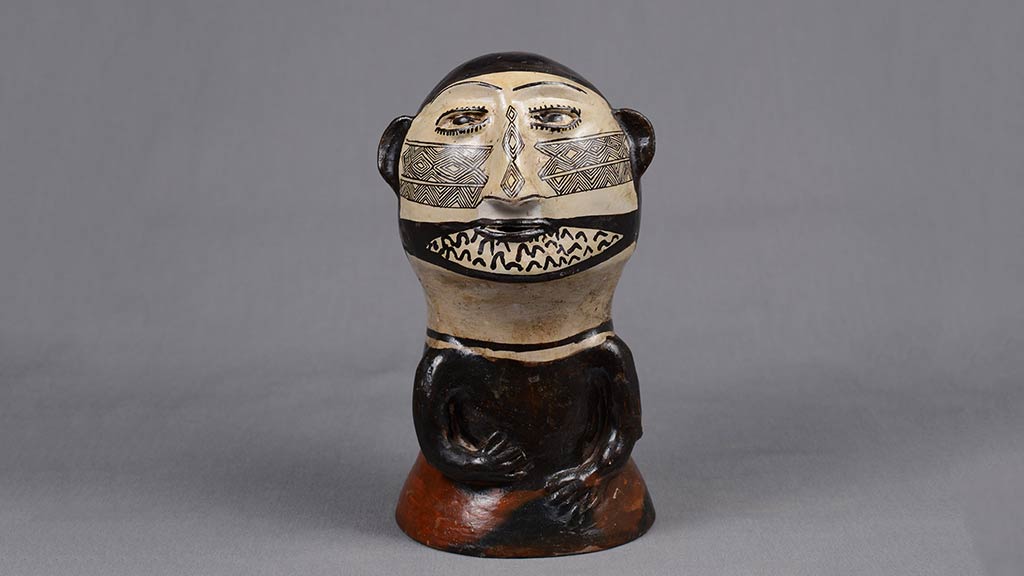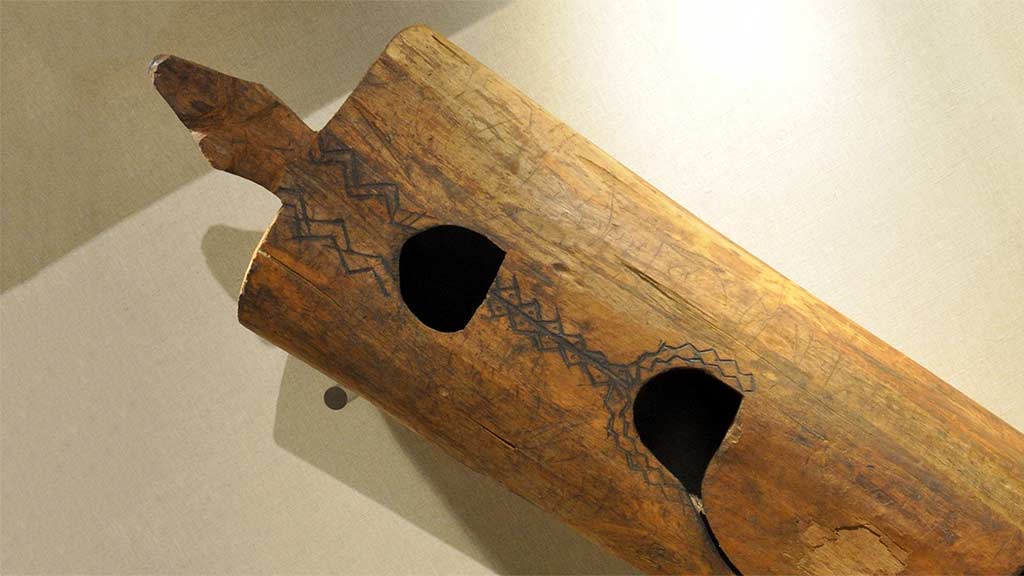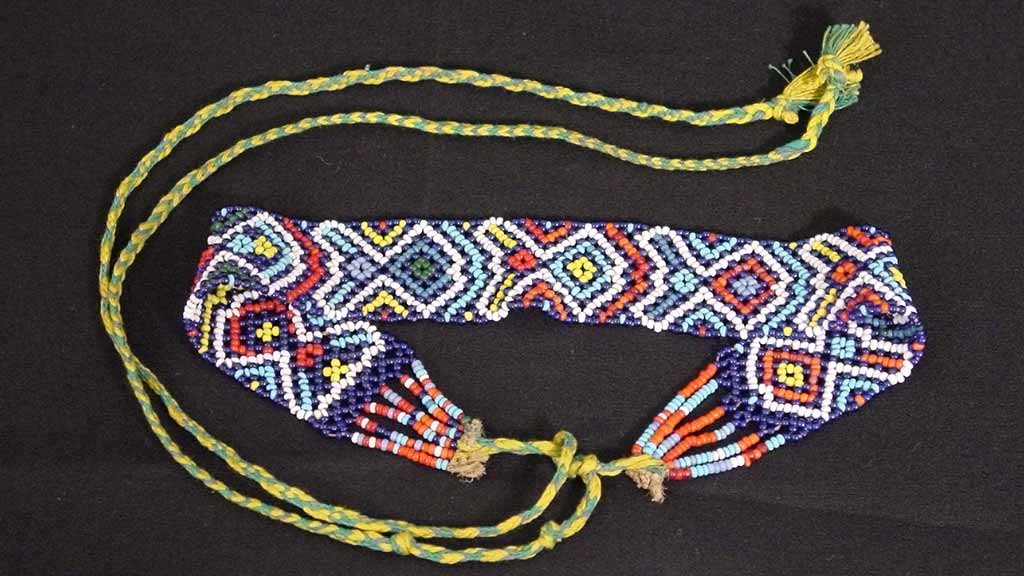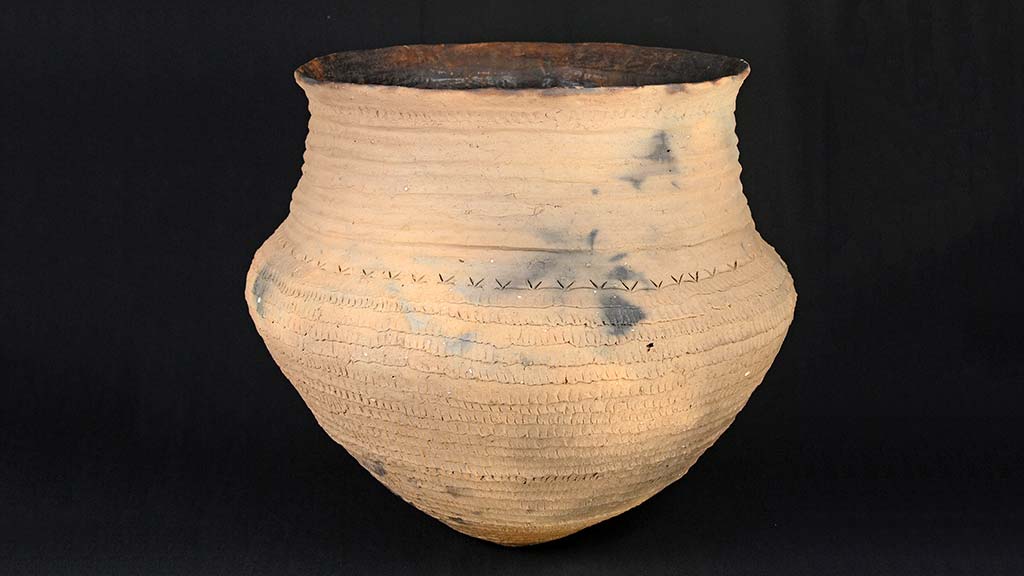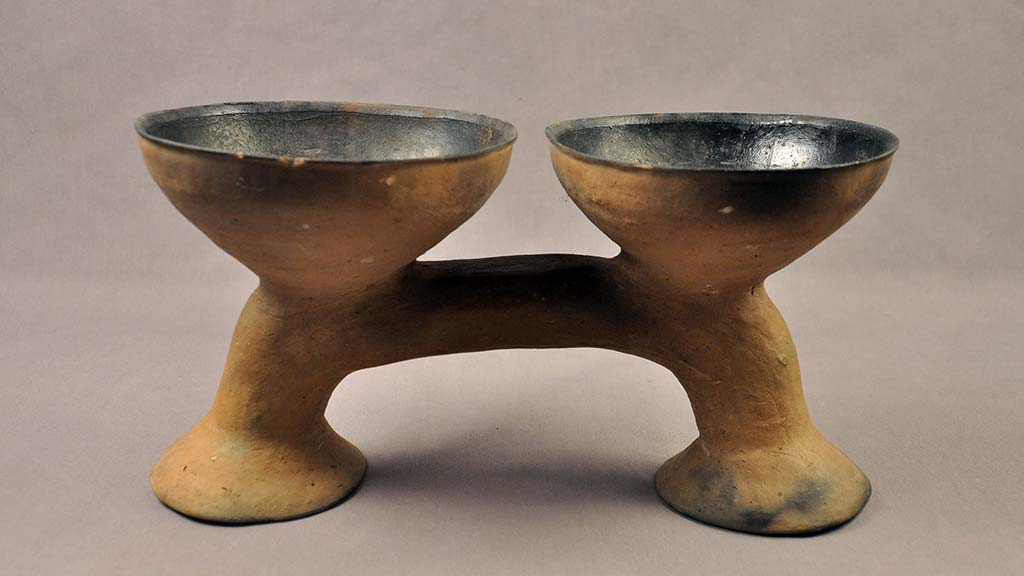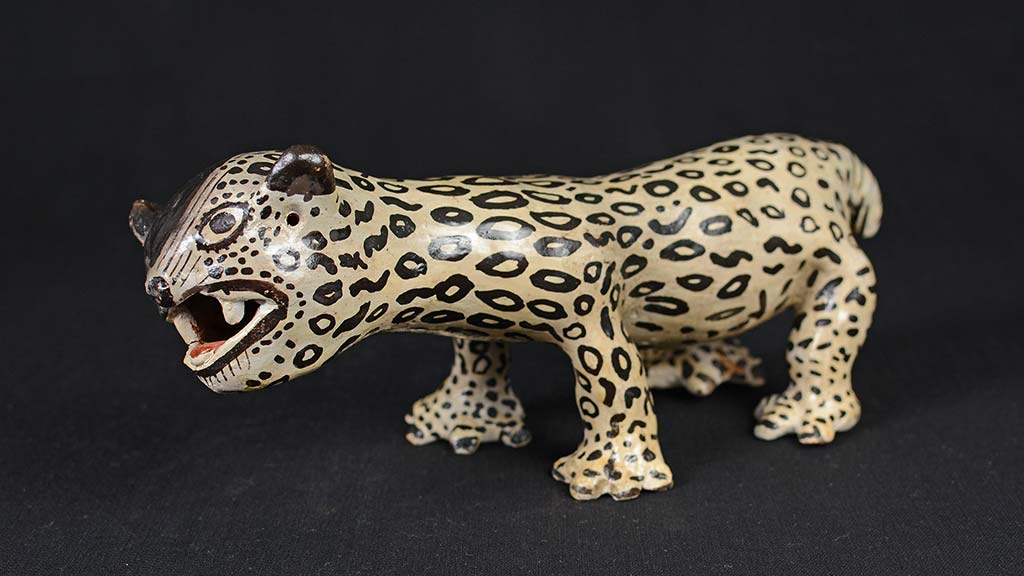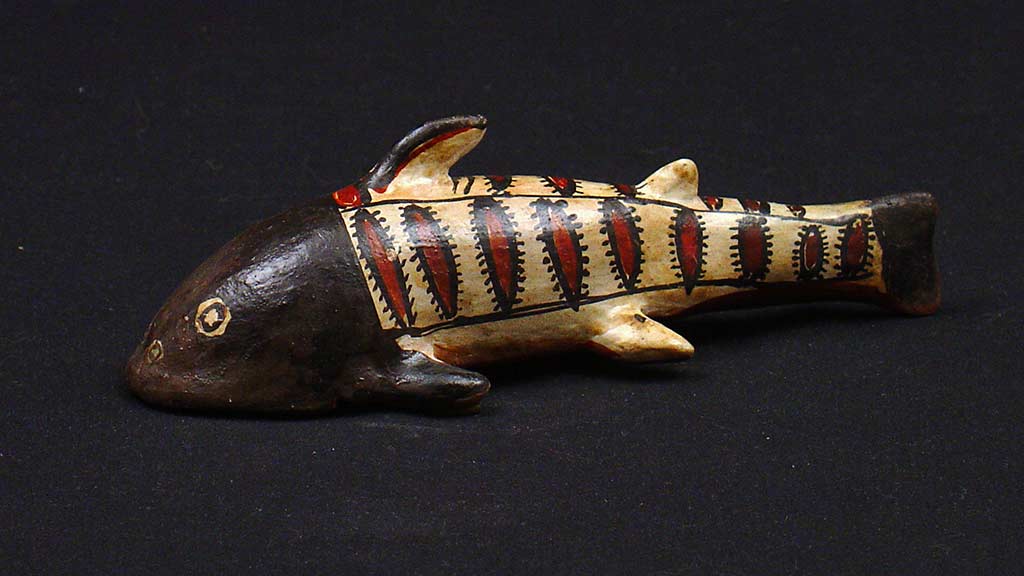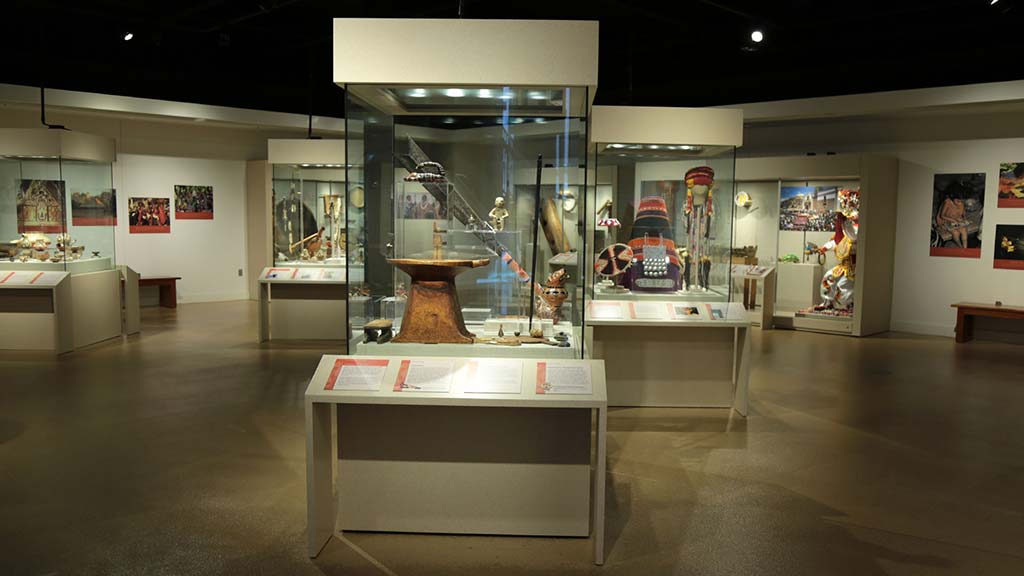
Whitten Collection of Amazonian Ecuador Cultural Artifacts
Norman E. and Dorothea S. Whitten have lived and worked with the indigenous Canelos Quichua people of Pastaza province, Amazonian Ecuador, from 1968 to the current day. The Spurlock Museum collection of over 900 objects includes musical instruments and ritual objects of bead, feather, and wood, but the majority of the collection is pottery made by Canelos Quichua women. This collection provides a look at the people of Amazonian Ecuador based on four main categories: pottery, mythology, music, and adornment.
Information on this valuable research resource has been contributed by Norman Whitten to the Spurlock Museum.
Images: Unless otherwise noted all cultures are Canelos Quichua.Canelos Quichua Pottery and Mythology
The distinctive pottery is the domain of visionary indigenous Canelos Quichua women. They create in 2 styles using traditional shaping and firing techniques. The smoke-blackened ware is used to cook and serve food and drink. The decorated polychrome ware is made to store and serve asua, a fermented food-drink with daily, festive, and ceremonial use. The polychrome ware is a mix of traditional and contemporary designs that incorporate 3 overarching master symbols: the anaconda and the water turtle, the land tortoise and iguana, and the coral snake. A myriad of images incorporate these master symbols, including especially the powers of mountains and rivers.
The 3 master spirits are:
- Sungui: spirit master of the water domain
- Amasanga: spirit master of the rainforest domain
- Nungui: spirit master of garden soil and pottery clay
Music and Adornment
Musical instruments and adornment used in festival and ritual activities are also widely represented. Male shamans interpret the pottery motifs with their visionary actions. Jalinga shoulder slings and bead and feather headdresses imbue the shamans with the powers of nature represented in the motifs.
Musical instruments such as the guasa (shaker), bombo and cununo (drums), and marimba are used by Afro-Colombians and Afro-Ecuadorians of the Pacific Lowlands culture area. They produce the most African-style music in the Americas. Ecuador is the only country in Americas where black freedom preceded slavery. After achieving early freedom in the mid-16th century, Afro-Ecuadorians intermarried with indigenous people. In 1599, spokesmen for the descendants marched to Quito to claim allegiance to Spain.
Additional Objects: Blackware Examples
Additional Objects: Polychrome/Effigy Examples
-
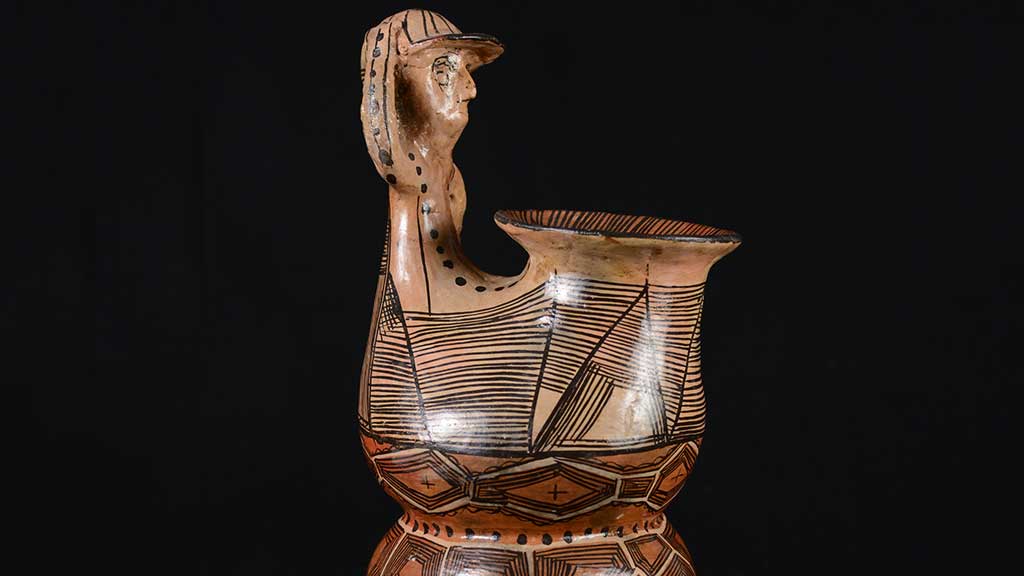 Effigy Vessel: Oil Boss in Anaconda Canoe Curaray, Pastaza Province, Ecuador 1985 Artist: Alegria Canelos 1997.15.0063
Effigy Vessel: Oil Boss in Anaconda Canoe Curaray, Pastaza Province, Ecuador 1985 Artist: Alegria Canelos 1997.15.0063 -
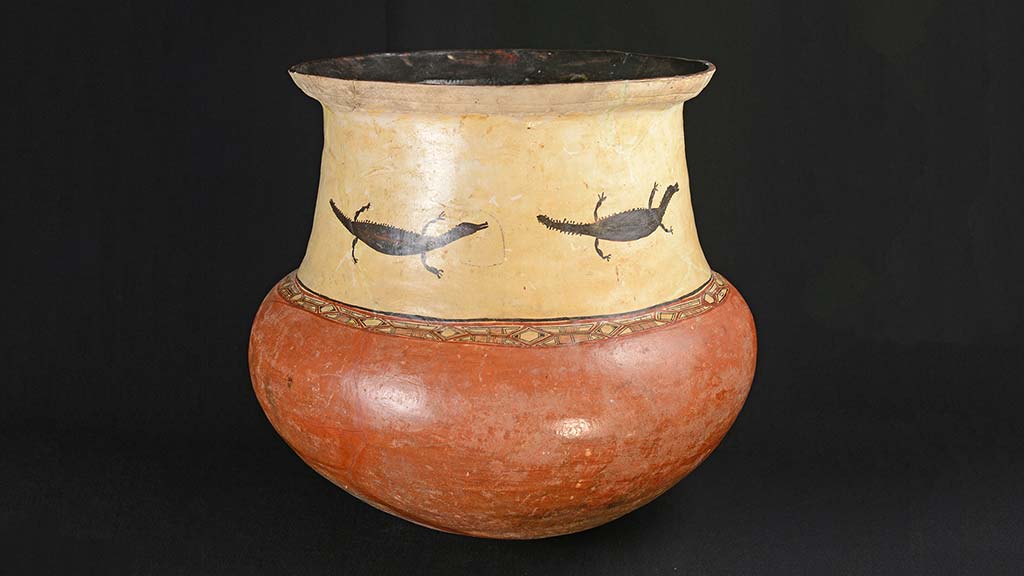 Tinaja (fermenting jar) (1997.15.0492) Sarayaquillu, Sarayacu, Ecuador 1972 Artist: Amadora Aranda 1997.15.0492
Tinaja (fermenting jar) (1997.15.0492) Sarayaquillu, Sarayacu, Ecuador 1972 Artist: Amadora Aranda 1997.15.0492 -
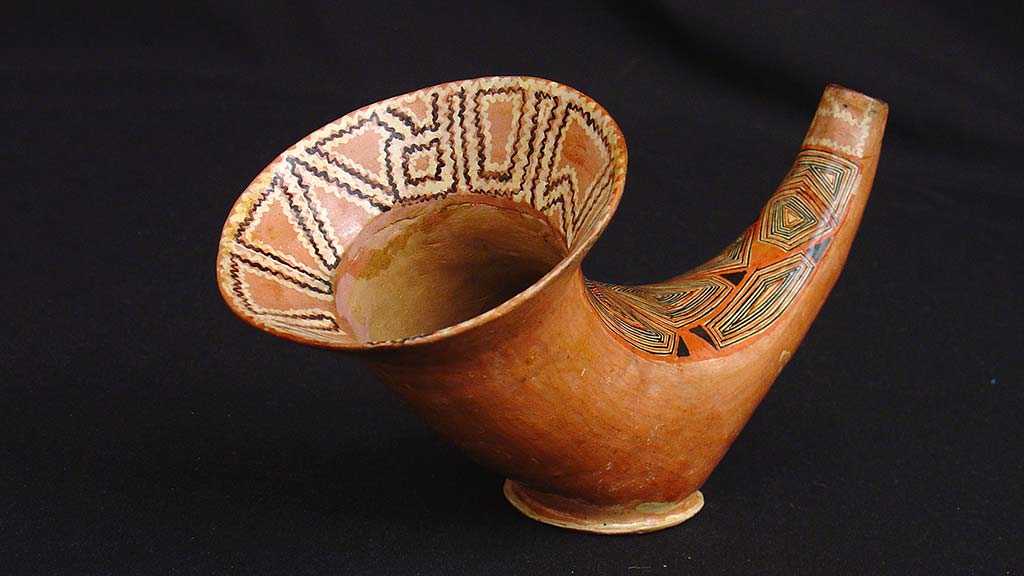 Festival Coronet Quillu Allpa, Pastaza Province, Ecuador 1986–1987 Artist: Eluisa Santi 1997.15.0056
Festival Coronet Quillu Allpa, Pastaza Province, Ecuador 1986–1987 Artist: Eluisa Santi 1997.15.0056 -
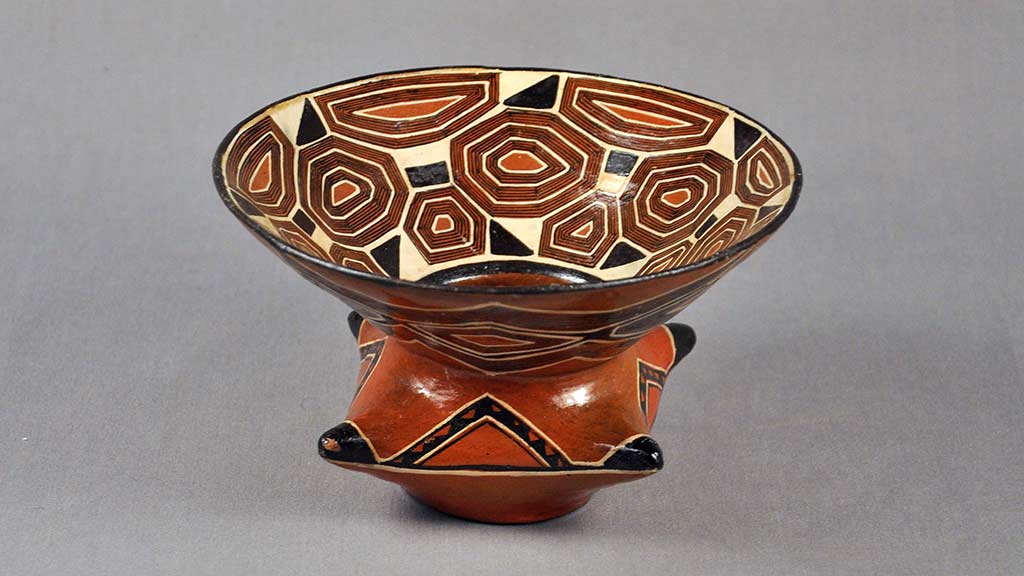 Cashew Drinking Bowl Curaray or Puyo, Pastaza Province, Ecuador 1985–1986 Artist: Alegria Canelos 2015.08.0021
Cashew Drinking Bowl Curaray or Puyo, Pastaza Province, Ecuador 1985–1986 Artist: Alegria Canelos 2015.08.0021 -
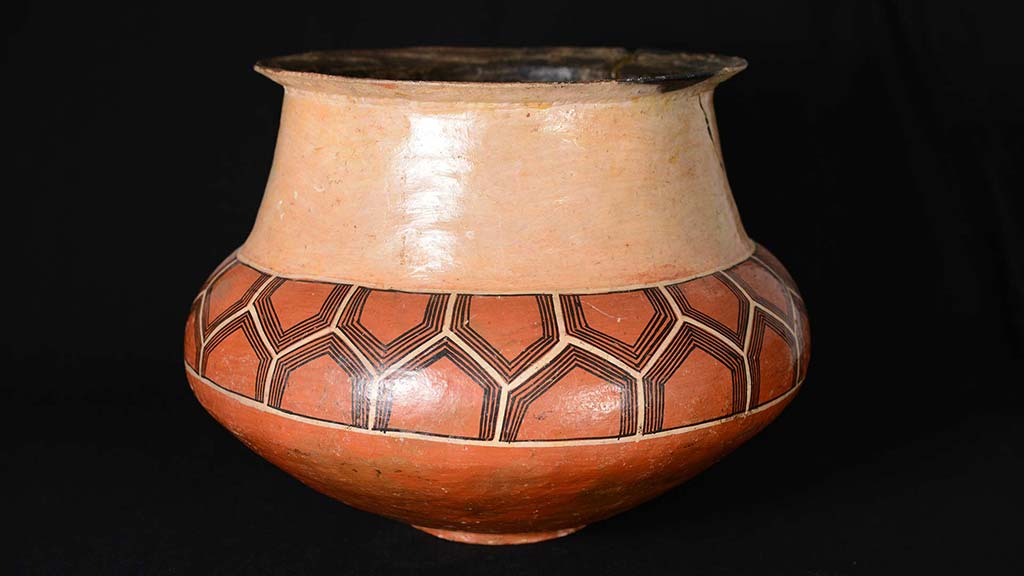 Tinaja (fermenting jar) (1997.15.0481) Canelos, Rio Chico Region, Ecuador 1983 Artist: Faviola Vargas Aranda 1997.15.0481
Tinaja (fermenting jar) (1997.15.0481) Canelos, Rio Chico Region, Ecuador 1983 Artist: Faviola Vargas Aranda 1997.15.0481 -
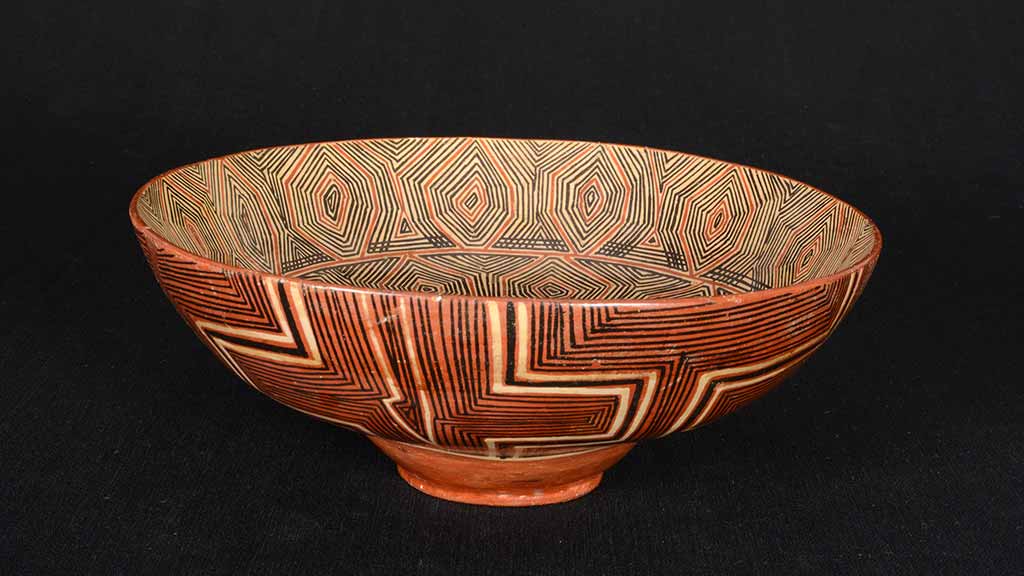 Drinking Bowl Curaray River Basin, Pastaza Province, Ecuador 1980 Artist: Catalina Andi 1997.15.0008
Drinking Bowl Curaray River Basin, Pastaza Province, Ecuador 1980 Artist: Catalina Andi 1997.15.0008
